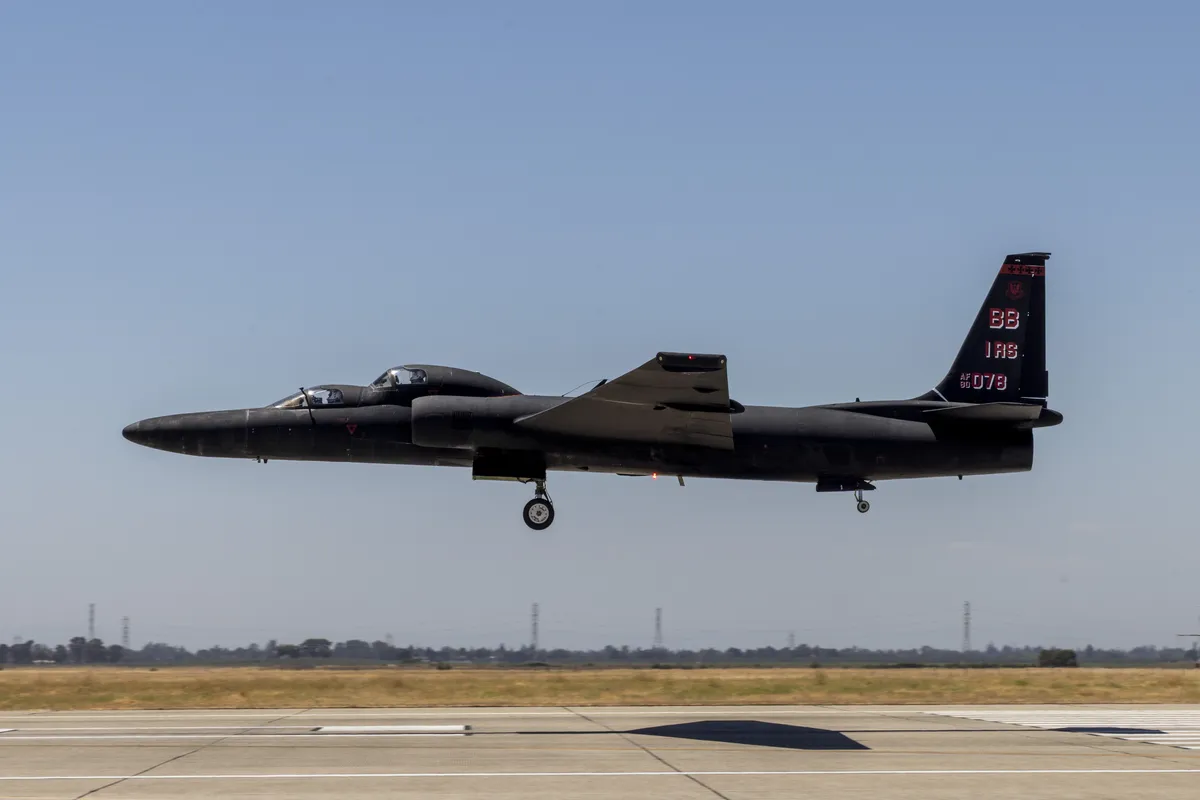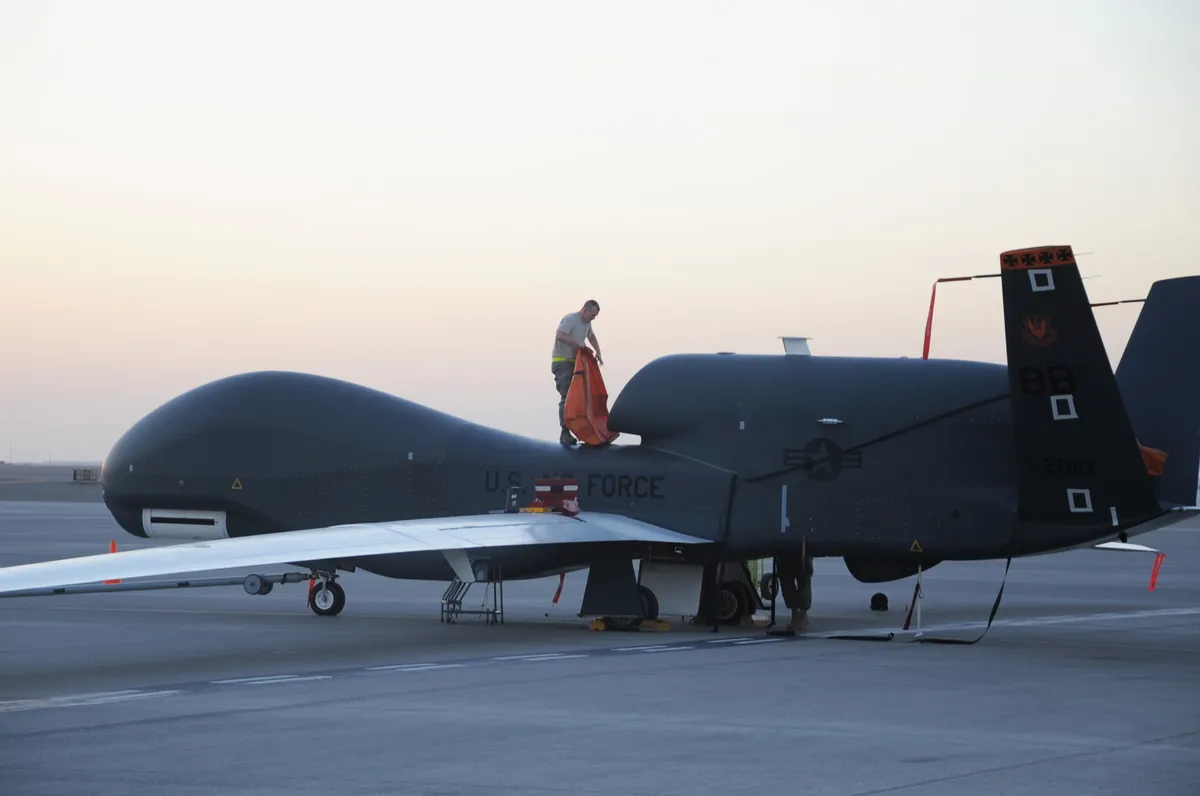America's 70-year-old spy plane breaks records whilst facing retirement
Anniversary flight highlights why Cold War technology still outperforms modern replacements

On the morning of 1st August 2025, pilots with the callsigns "ULTRALORD" and "JETHRO" completed something unprecedented in military aviation. Their U-2 Dragon Lady spy plane landed at Beale Air Force Base after 14 hours aloft, having traversed all 48 contiguous American states and broken multiple endurance records for aircraft of its class. What made this achievement particularly remarkable was not just the feat itself, but the timing: the record-breaking flight occurred on the 70th anniversary of the U-2's accidental first flight, by an aircraft that the Pentagon is actively trying to retire.
This contradiction captures something profound about the nature of technological progress in military affairs. Whilst civilian technology follows predictable cycles of rapid obsolescence, the U-2's persistence challenges assumptions about innovation and replacement. Here is an aircraft designed before satellites, developed at the dawn of the jet age, yet still performing missions that newer, more sophisticated systems cannot match.
The accidental longevity of strategic design
The U-2's story began in 1955 when test pilot Tony LeVier inadvertently lifted off during what was meant to be a high-speed taxi test at Area 51. Kelly Johnson's Skunk Works had created something unique: a powered glider optimised for the thin atmosphere above 70,000 feet, designed to photograph Soviet military installations beyond the reach of interceptors or surface-to-air missiles.
Seven decades later, that basic concept remains unmatched. The Dragon Lady still flies higher than any operational aircraft save the SR-71 Blackbird, which was retired in 1998 without replacement. More significantly, it carries sensor payloads and generates electrical power that newer platforms struggle to match. Chris Pocock, who has written four books about the aircraft, notes that Global Hawk's "maximum altitude is at least 12,000 feet lower; it takes far longer to get there; its payload-by-weight is 50 per cent less."
The anniversary flight itself required 11 years of planning, demonstrating the complexity that makes the U-2's missions so difficult to replicate. Cory "ULTRALORD" Bartholomew, who conceived the route in 2014, explained that the flight pushed both aircraft and crew to their physiological limits. The two pilots—who hold the records for most U-2 flight hours—wore pressure suits for the entire mission, operating in conditions that approximate space flight.
This human element provides capabilities that autonomous systems cannot match. Where drones follow pre-programmed routes, U-2 pilots adapt to changing conditions, pursue emerging targets, and make real-time decisions about sensor employment. General Mike Hostage, former head of Air Combat Command, warned that replacing the U-2 with Global Hawk would mean combatant commanders "are going to suffer for eight years and the best they're going to get is 90 per cent" of current capability.
The limits of technological substitution
The Pentagon's desire to retire the U-2 reflects broader assumptions about technological progress: that newer systems automatically outperform older ones, that complexity equals capability, and that unmanned platforms offer inherent advantages over crewed aircraft. Yet operational experience suggests otherwise.
Consider the comparison with satellites, which should theoretically provide superior coverage. Satellites follow predictable orbits with limited time over targets, cannot be rapidly retasked to emerging situations, and lack the sensor power generation that comes from a jet engine. The U-2, by contrast, can loiter over areas of interest for hours, carry multiple sensor systems simultaneously, and be redirected mid-mission based on intelligence requirements.

Similarly, whilst Global Hawk offers impressive 30-hour endurance, it sacrifices altitude, payload capacity, and operational flexibility. The drone costs more per flight hour than the U-2 and requires extensive ground infrastructure for remote operation. Most tellingly, when the Pentagon wanted to photograph a Chinese spy balloon in 2023, it chose a U-2 rather than any of its newer surveillance platforms.
These practical limitations explain why Congress has repeatedly blocked U-2 retirement plans. The House Appropriations Committee prevented any fiscal 2025 funding for divestment, continuing a pattern of legislative intervention that stretches back years. Combatant commanders consistently request U-2 capabilities, creating tension between modernisation pressures and operational effectiveness.
Institutional memory versus innovation pressure
The struggle over the U-2's future reveals deeper tensions about how military institutions balance proven capability against innovative potential. Pentagon officials argue that the $600 million annual cost of U-2 operations should fund development of classified "penetrating and persistent" capabilities—likely referring to the rumoured RQ-180 stealth drone and advanced satellite systems.
Yet this logic assumes that replacement systems will actually deliver equivalent capability, an assumption challenged by the Global Hawk experience. Despite billions in development costs, the drone has never matched the U-2's operational effectiveness. The Pentagon even attempted to retire early Global Hawk variants as more expensive and less capable than the aircraft they were meant to replace.
The U-2 community itself embodies institutional memory that transcends individual technology programmes. With just over 1,000 pilots qualified on the aircraft in its 70-year history, the Dragon Lady represents a concentration of high-altitude reconnaissance expertise that cannot be easily replicated. The anniversary flight honoured fallen U-2 pilots by including specific flight paths over their home states, emphasising how current operations build upon decades of accumulated experience.
This human dimension extends beyond pilot skills to maintenance expertise, operational procedures, and institutional knowledge about how to employ high-altitude reconnaissance effectively. Lieutenant Colonel John Mattson of the 1st Reconnaissance Squadron argues that the U-2's "extreme ownership of our mission to build aircrew ready to exploit and dominate the electromagnetic spectrum" represents capabilities that cannot be simply transferred to different platforms.
Adaptation as survival strategy
Perhaps most significantly, the U-2's longevity stems from its capacity for adaptation rather than resistance to change. The aircraft has evolved from film-based photography to digital sensors, from strategic reconnaissance to tactical battlefield support, from standalone operations to network-centric warfare integration.
Recent modifications include serving as a communications relay between different generations of fighter aircraft and as a testbed for artificial intelligence systems. William Collins, Senior Materiel Leader for intelligence, surveillance and reconnaissance, notes that the service is "using U-2 in unique and innovative ways and as a surrogate platform, decreasing risk for our fifth-gen fighters."
This adaptability reflects fundamental design principles that prioritise flexibility over specialisation. The U-2's modular architecture allows rapid integration of new sensors and systems, whilst its high-altitude capability provides a stable platform that newer technologies can exploit. Lockheed Martin has recently demonstrated distributed processing aboard the aircraft using Kubernetes containerisation technology, suggesting that the platform can serve as an airborne edge computing node for future warfare concepts.
Such adaptability challenges conventional thinking about technological obsolescence. Rather than being replaced by newer systems, the U-2 has evolved to complement and enable them. This pattern suggests that successful military platforms achieve longevity not through technical superiority alone, but through architectural flexibility that accommodates changing requirements.
The persistence of practical solutions
The U-2's anniversary flight thus represents more than nostalgic celebration. It demonstrates how practical solutions often outlast theoretical improvements, how institutional knowledge accumulates value over time, and how adaptation can prove more powerful than innovation.
This has implications beyond military aviation. In an era obsessed with technological disruption, the Dragon Lady's persistence suggests that mature, optimised systems often provide capabilities that newer alternatives struggle to match. The aircraft's 97 per cent mission effectiveness rate and remaining airframe life until 2050 underscore why operators resist retirement despite modernisation pressures.
The broader lesson concerns how institutions evaluate technological change. The metrics that drive procurement decisions—endurance, cost per flight hour, technological sophistication—may miss crucial factors like operational flexibility, institutional expertise, and adaptation potential. The U-2's survival suggests that replacement decisions should consider not just what new systems can do, but what existing capabilities might be lost.
As "ULTRALORD" and "JETHRO" completed their record-breaking flight, they demonstrated that sometimes the best way forward involves preserving what already works whilst building new capabilities around proven foundations. In a world of rapid technological change, the Dragon Lady's 70-year service life offers a reminder that persistence and adaptation can be more valuable than pure innovation.
Whether the U-2 will complete another decade of service depends on political decisions yet to be made. But its anniversary flight has already proved something important: that well-designed systems, operated by skilled people and adapted to changing requirements, can achieve remarkable longevity. In military affairs, as in life, newer is not always better—sometimes it is simply different.